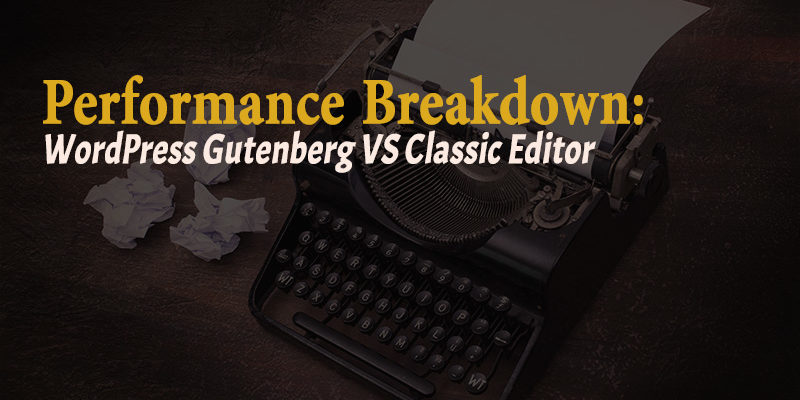
Recently, a common question has occupied our minds. However, the question is simple but it is mind-blowing. How vigorous is the WordPress recent editor in the block? Let’s check this out with a comparison of Gutenberg and Classic editor performance.
Here is our detailed comparison on how vigorous Gutenberg editor is. We will start by building a section of content from the start to any of the problems on interface speed. Also, we will review code quality, as well as usability. Our primary aim is to share our final thoughts on which of the two editors is the best option for use in 2019.
Here are the two primary questions that we must discuss in details in the comparison section:
- Are there any performance related problems?
- Is the interface slower or quicker than that of the classic editor?
Performance of Gutenberg Editor
Before the official release, the concern of most people was on speed and real functioning. This was a major concern to me as well. Because some page builders often run slow after I have opened a few tabs on my PC and Mind you, it is a brand-new laptop with 8 GB RAM. However, I have some good news to announce from my personal experience. The Gutenberg editor runs easy when adding or editing text.
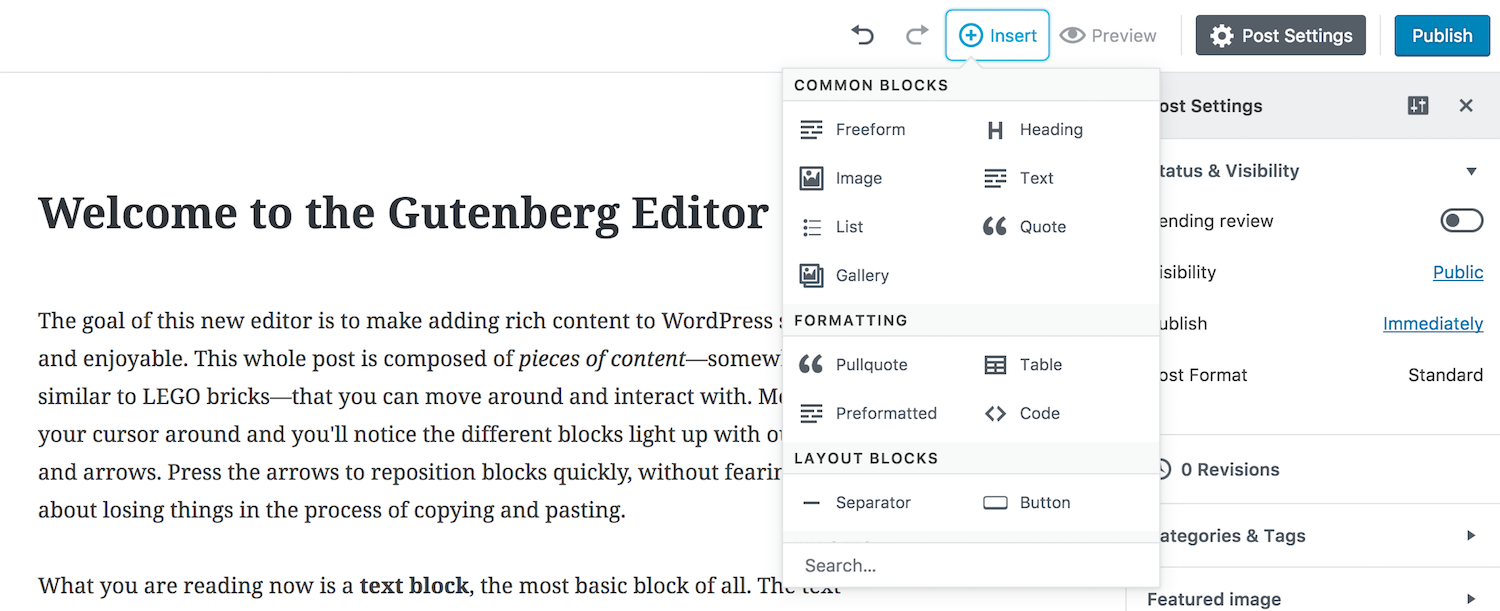
Also, it runs very easy when you are adding images, galleries, and recent blocks. It is worth to note I experimented all these with many tabs open.
Nonetheless, I have a problem with the editor. The issue is breaking the text into sections of paragraphs. Thus, text editing is not easier. You will be making movement between paragraphs. Moreover, the editor was slow when I was converting views from code to visual and vice versa. From my experience, there are no question about the performance problems of the interface.
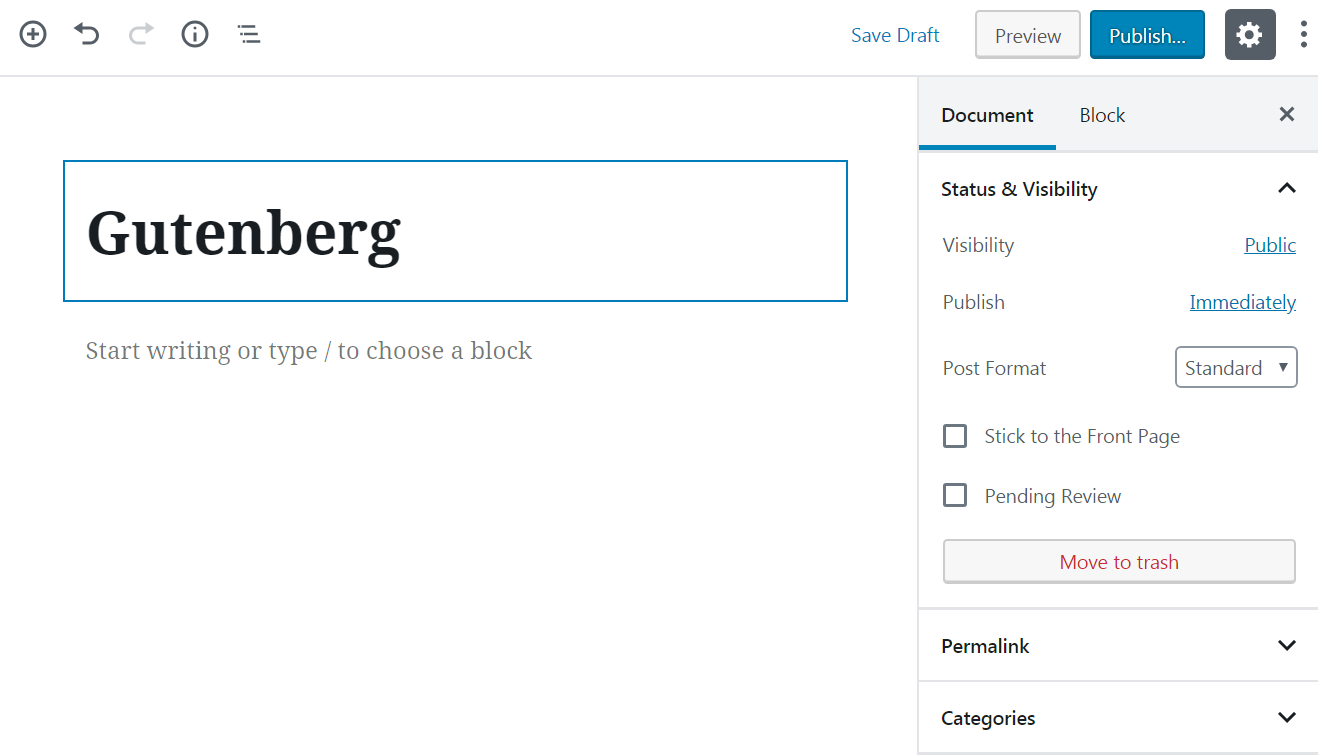
Note: I did not encounter any main performance problems on my laptop. Yet, most people have stated this as a problem on their computers. Hence, the performance might depend on your PC.
Performance of Classic Editor
Without any doubt, the Classic editor performed exemplary well on this test. If I was awarding grades, it would get an A. Here, problems of text getting automatically separated into blocks does not exist. Also, the editor was slow when I was converting visual view to code and vice versa.
Note: There are many online complaints on Gutenberg’s performance . However, there are few complaints on the classic editor.
Final Thoughts
The performance of Gutenberg editor was not worse than that of Classic editor. Still, there was no single enhancement on performance. According to reviews, the old editor did not have any performance issue. Thus, if you can consider the complaints and issues raised by the users, then Classic editor wins. Besides, the Gutenberg editor has a slower workflow due to automatic blocks.
Usage
Well, this is among the most debatable topics on Gutenberg. Some users have taken a firm stand on visual editors that are extra strong. However, most users opt for the limited Classic editor. The reason being that it is easier to access and create content.
Usage of Gutenberg
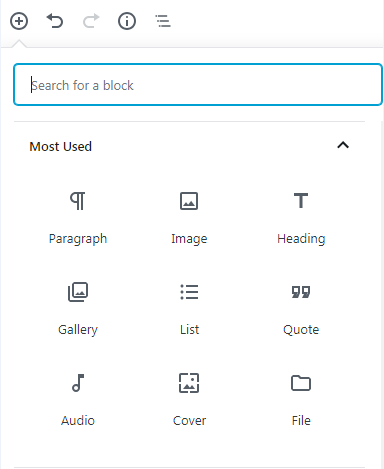
In regards to usage, we must go out of the way from the learning curve, immediately we start using any recent tool. Even so, Gutenberg is much easier to operate for beginner WordPress users. Besides, the editor provides more than what you pay for.
More so, if your concentration is on building rich content for the media. Moreover, it is worth noting that you can instantly add galleries and covers. Hence, you do not to need “add media” followed by creating galleries.
1. One of the greatest benefits that Gutenberg offers is the search function
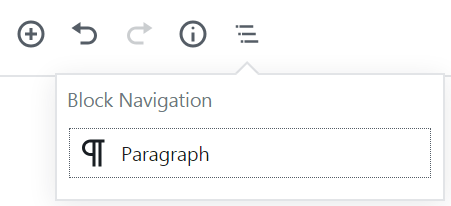
It allows tech-savvy consumers to swiftly get familiar with doing things. For example, the addition of YouTube videos. Also, it allows them to familiarize with other more composite elements.
2. Each Paragraph Stands as a Single Block
The editor automatically converts each paragraph into a block. Nonetheless, this appears as a strange UX move by the design team. The feeling of the move is not natural. For example, you cannot copy a section of a paragraph and the next paragraph. Instead, the editor forces you to copy an entire paragraph. This happens whenever you are choosing text from not less than one.
However, some good news is that in case you make a paragraph, there is no need for editing the blocks. Instead, you can delete the extra line, and your text gets back to the main paragraph.
3. Toggle Right Sidebar
The new Gutenberg editor offers a unique feature that most writers are thankful for. The capacity to entirely hide the right toolbar. Thus, it reduces distractions when you are writing.
The recent Gutenberg editor comes with some more tips. However, the question is, do most WordPress users need the extra elements and choices?
The extra tips include my personal favorite, columns, and covers. Also, there are others. For example, the addition of drop-caps to imitate an old but timely news editor or copywriter.
Usage of Classic Editor
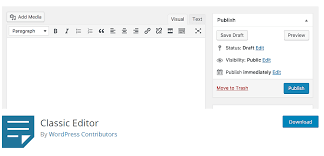
1. User-friendly/straightforward
Gutenberg editor got developed based on major objectives. Among them was to create a more straightforward interface for non-techies. However, the Classic editor is user-friendly.
The editor has the “add media”, categories and title sections well placed. Thus, someone using it for the first time can publish their content within a few minutes. Nonetheless, the piece of content might not distribute h2 and h3 tags.
2. Fewer Elements
The Classic editor has fewer elements. Also, it has a simple structure. The only time you can open a new tab is when editing link URLs, or when adding images.
Thus, it is laborious when setting up two columns for visual content, or adding items like videos. Even so, this is perhaps not a factor for most pages and posts.
In short, most heavy lifting occurs outside WordPress. It takes place and tools like Final Cut Pro, Illustrator, and Photoshop. Besides, this includes a piece of content that is visually heavy.
Summary
In regards to usage, the best editor relies on the user. For example, if you are a blogger whose main priority is the text editor, then Classic editor is the best pick. It offers a natural feeling for text editors. So, Gutenberg editor is the best choice if you are a designer or photographer. Also, if you like to share visual stories. It is strong, but not stronger as compared to WordPress plugins or its competitors.
Conclusion: Is it Worth to Switch to the new Gutenberg?
My final stand is that the new Gutenberg editor is not worth the switch. However, I made the decision after using it to write many posts for my site. Also, the costs and sufferings are not worth the switch.
Besides, the new Gutenberg editor has performance problems. The user interface is not friendly, as it is untidy and not automatic. This should not be the case.
Furthermore, if your WordPress site is text-based, the editor does not fit you. Likewise, if you deal with visuals, use other WordPress plugins.
Even so, you can use Gutenberg if you intend to create media-rich content. Yet, you must get top code standards, unlike what many page builders accept.





